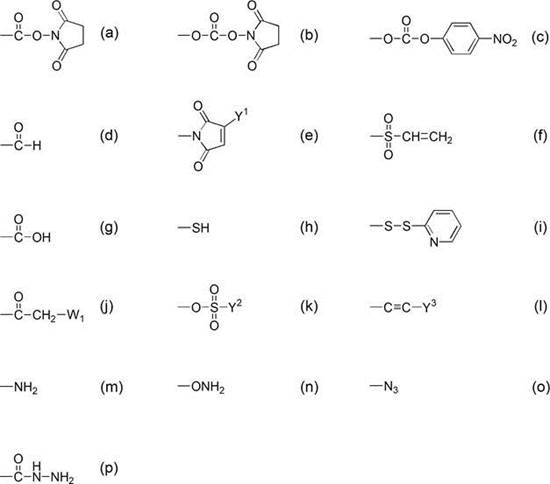Asymmetric branched-chain degradable polyethylene glycol derivative
A polyethylene glycol, decomposable technology, which is applied in non-active ingredients medical preparations, peptides, organic chemistry, etc., can solve the problem of not involving polyethylene glycol derivatives, etc., to reduce impurities and inhibit cell vacuoles. Effect
- Summary
- Abstract
- Description
- Claims
- Application Information
AI Technical Summary
Problems solved by technology
Method used
Image
Examples
Embodiment 1
[0267] [chem 29]
[0268]
Embodiment 1-1
[0270] [chem 30]
[0271]
[0272] Average molecular weight = 20,000, "SUNBRIGHT MEH-20T" manufactured by NOF Corporation) (10 g) was dissolved in toluene (40 g), and after reflux dehydration at 110° C. for 1 hour, it was cooled to 40° C., and triethylamine ( 80 mg), methanesulfonyl chloride (84 mg), and reacted at 40° C. for 3 hours. After completion|finish of reaction, after diluting with toluene (100g), hexane (100g) was added, and it stirred at room temperature for 30 minutes, and deposited the product. Suction filtration was performed using 5A filter paper, and after recovering a deposit, it was dissolved in ethyl acetate (200g), and hexane (100g) was added, and it stirred at room temperature for 15 minutes, and deposited the product. Suction filtration was performed using 5A filter paper, and the precipitate was collected, washed with hexane (100 g), suction filtered using 5A filter paper, and vacuum-dried to obtain compound (p1). The yield was 8.9g.
[0273] 1 H-...
Embodiment 1-2
[0275] [chem 31]
[0276]
[0277]Glycine hydrochloride (5 g) was dissolved in ion-exchanged water (50 g). NaOH (3.0 g) was added to the aforementioned glycine aqueous solution, and the pH was adjusted to 10.8. Thereafter, the compound (p1) (8 g) obtained in Example 1-1 was added to the aforementioned aqueous solution, and the solution was reacted at 40° C. for 72 hours. After the reaction, the pH of the reaction liquid was neutralized to about 7 with hydrochloric acid solution. After neutralization, chloroform (50g) was added, and after stirring at room temperature for 15 minutes, the organic layer was collect|recovered. The organic layer was concentrated and dissolved in ethyl acetate (100 g), and hexane (50 g) was added, followed by stirring at room temperature for 15 minutes to precipitate a product. Suction filtration was performed using 5A filter paper, and the precipitate was collected, washed with hexane (50 g), suction filtered using 5A filter paper, and vacuum-...
PUM
| Property | Measurement | Unit |
|---|---|---|
| decomposition efficiency | aaaaa | aaaaa |
| decomposition efficiency | aaaaa | aaaaa |
Abstract
Description
Claims
Application Information
 Login to View More
Login to View More - R&D
- Intellectual Property
- Life Sciences
- Materials
- Tech Scout
- Unparalleled Data Quality
- Higher Quality Content
- 60% Fewer Hallucinations
Browse by: Latest US Patents, China's latest patents, Technical Efficacy Thesaurus, Application Domain, Technology Topic, Popular Technical Reports.
© 2025 PatSnap. All rights reserved.Legal|Privacy policy|Modern Slavery Act Transparency Statement|Sitemap|About US| Contact US: help@patsnap.com



